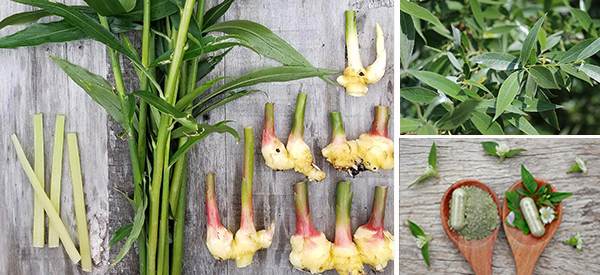
Just Like Ibuprofen: The Pain-Relieving Backyard Plants
Substituting herbs for drugs is gaining popularity now. Many people still believe that if you really want to get healthier or recover from an illness, you better include pharmaceutical drugs in your recovery plan.
However, herbs contain dozens if not hundreds of active ingredients. Many of these active ingredients work together to remediate the problem. Meanwhile, in the background, other active ingredients are fulfilling other healing functions in the body. Using simple herbs in your backyard is easy enough for the average person to try and only involves a little bit of study over everyday life.
Ibuprofen Used Commonly for Pain Reduction and Control
Ibuprofen is a medication that was introduced in the United States in 1974. At the time of its discovery, scientists were searching for a treatment of rheumatoid arthritis that was not based on corticosteroids. Now, Ibuprofen is one of the most widely used non-steroidal anti-inflammatory agents (NSAIDs) worldwide for the treatment of inflammatory diseases and rheumatoid disorders.

Ibuprofen is also used for:
• relief of symptoms when women have urinary tract infection when antibiotics aren’t working too well
• relieving menstrual cramps when the woman starts taking it a few days before her period starts
• as a preventative for acute mountain sickness that gives you a high altitude headache
• joint pain
• chronic knee pain (used topically or orally)
• ear pain and middle ear inflammation in children
• toothache
• inflammation in the mouth and throat, especially in children
• pain after surgeries such as removal of tonsils and adenoids
• arthritis
• fever and pain in children related to inflammation
Ibuprofen has the lowest toxicity to the GI tract of all the NSAIDs but still, it can bring toxicity. It has similar properties to aspirin.
Just As Effective as Ibuprofen
Over the years there have been natural medicine-minded scientists looking for alternatives to ibuprofen. They have found dozens of herbs that can do similar things as ibuprofen.
Two notable ones that have been written about that can substitute for the drug could be in your backyard: ginger or willow bark.
Ginger
Ginger grows in the eastern half of the U.S. in rich soils found in shady deciduous forests. It’s the root of ginger that is the powerful part of the plant to use when it comes to anti-pain, anti-fever, and anti-inflammatory actions.

To find it in your backyard, there are usually one or more requirements that have to be met:
1. Someone planted it there in the backyard at least a year ago. The root takes at least 8 to 9 months to develop.
2. Your outside temperatures don’t ever get that cold or snowy. Usually, ginger is grown in tropical climates such as in Asia.
3. You have a good idea of what the wild plant looks like.
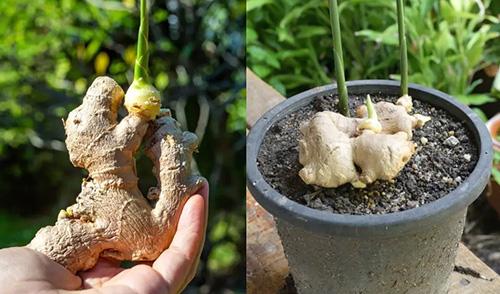
If you live in a colder climate, growing it indoors or in a climate-controlled greenhouse may be the answer to have fresh ginger around when you need it.
How to Use Ginger as a Substitute for Ibuprofen
If you’re considering using ginger as a substitute for ibuprofen, it’s good to know how to calculate the equivalency rates.In 2009 researchers at two universities found that women taking four 250 mg capsules of ginger for three days from the start of their menstrual period got relief from the ginger. Their relief was comparable to those that used ibuprofen in the study.
In another study, there was a significant effect of ginger in reducing pain in women with bonafide menstrual cramps. That means these women were the true form of the PMS witches you’ve heard about or maybe know! The women took anywhere from 3 capsules to 8 capsules a day for the first three days of their menstrual cycle. This gives us a good idea of how to make the substitution.
Okay, one-fourth of a teaspoon of freshly grated ginger is equal to 250 mg. One ibuprofen pill is usually 400 mg. So if you’re making fresh ginger tea, then follow this recipe:
Ginger Anti-Inflammatory, Pain-Busting Tea
Ingredients:
Fresh ginger root
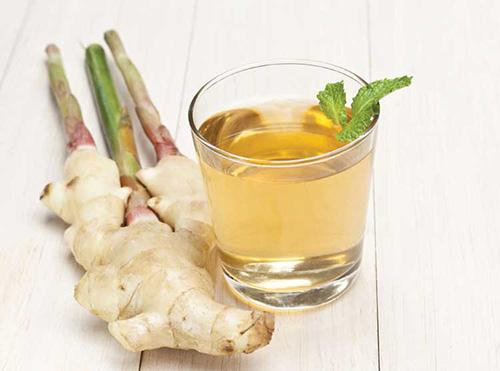
Directions:
1. Dice the root into very small pieces.
2. Place them in a small container for storage in the refrigerator.
3. When you need to make a cup of tea, use one teaspoon in a cup of boiling water. Add lemon for flavoring along with a little honey. This will give you 1000 mg ginger.
4. Repeat the process with another cup of tea one or more times per day.
2. Willow Bark
The second herbal alternative for anti-inflammatory, anti-fever, and anti-pain properties is willow bark extract. It’s been commonly used for chronic low back pain, joint pain, and arthritis.
Willow bark is effective because of the medicinal constituent called salicin plus other salicylates, polyphenols, and flavonoids. Originally, the lab scientists thought it was only because of salicylic acid and salicin but now they know better. Many constituents work together in the plant.
You might already know that salicylic acid is the active ingredient found in aspirin; in fact, the pharmaceutical industry copied this ingredient from willow bark extract to create aspirin and mass-market it. Now aspirin is the most widely used drug worldwide.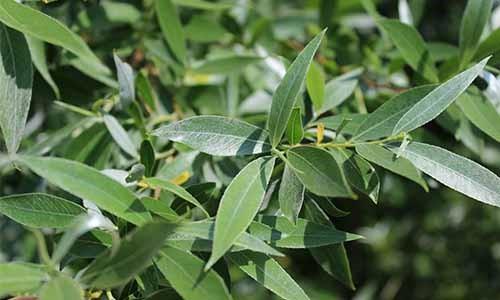
The history of aspirin-like compounds used for health actually goes back to the Egyptians and Sumerians, who used it to decrease pain and fever. Even the great physicians from ancient Greece and Rome were wise about using the plant, and you’ll find old herbal texts that discuss its use.
Willow bark works because its active ingredients down-regulate the inflammatory mediators in the body, those culprits that are responsible for causing inflammation in the body. It suppresses their production, allowing your body to become inflammation-free.
Willow bark extracts are made from the bark of the willow tree.
How to Make Your Own Willow Bark Extract
Here’s how to make willow bark extract from the tree in your backyard:
1. With a sharp large survival knife and a little caution, cut a square into the trunk.
2. Pry the bark from the tree.3. You’ll see a pink section of the bark. Shred this part of the bark. Place it in a coffee filter as you are collecting the bark. Collect about 3 handfuls of the bark.
4. Back in your kitchen, take 2 tablespoons of the shredded bark and place in a small quart-sized pot with 1 quart of water. Place the extra bark in a container, cover, and mark it with the name “willow bark” and the date.
5. After bringing the bark and water to a boil, simmer for 15 minutes.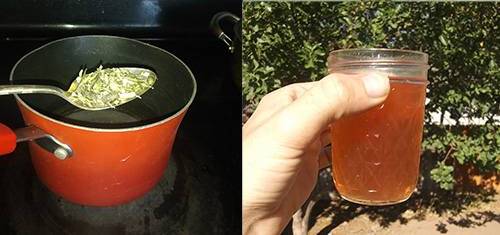 6. Turn off the burner. Allow the bark to steep for 30 minutes.
6. Turn off the burner. Allow the bark to steep for 30 minutes.
7. Drink 1 cup up to 3 times daily.
Some things you should know about the use of willow bark extract include:
• Willow bark active ingredients thin the blood so check with your health practitioner if you are already on anti-coagulants.
• If you are sensitive to salicylates or salicylic acid, you may be sensitive to the same ingredients in the cup of tea. Make another herb choice for an anti-inflammatory agent.
• It’s not known if the active ingredients in willow bark extract are excreted in breastmilk. We do know that the drug aspirin is found in breastmilk. If you are breastfeeding, choose another herb. The plant kingdom is full of many choices!
You may also like:
 Just like Xanax, the Anxiety Relieving Plant That Grows in Your Backyard
Just like Xanax, the Anxiety Relieving Plant That Grows in Your Backyard
I Stopped Spending Money At The Pharmacy By Growing These 10 Plants (Video)
4 Natural Antibiotics that Can Replace Over-the-Counter Drugs

I would be curious to know how the willow bark in it’s natural state, taken as tea ( as you have described above) is processed through the body? Is it through the kidney (such as Ibuprofen ) or through the liver ( such as Acetaminophen )
Which varieties of willow are these? Would any in the willow family work such as weeping willow, pussy willow? Do you have a variety name I can look up?
Hi Jessica,
Species such as the following ones will give you enough of the active ingredients:
• white willow (Salix alba)
• black or pussy willow (Salix nigra)
• crack willow (Salix fragilis)
• purple willow (Salix purpurea)
• weeping willow (Salix babylonica)
Your tree should be one to two years old for the best results.
God bless!
I appreciate all the info you provide! I study & forage & study & forage, but still have such a hard time being confident in identification. ☹️. But I will not give up on trying to find natural alternatives for hubby & me! Thank you for all your help!
Hi Andrea,
Thank you for your interest in our work and for your support.
We really appreciate it!
and.. Don’t give up 🙂
God bless!
No Canadian sales???
Would like to know how yo make the back yard weed for pain & infection. Please send proceedure
Please tell me how to grow GUMS for mine has receded. I really need it.